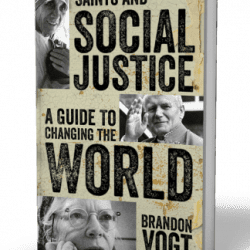 The good news: J.R.R. Tolkien’s The Legend of Sigurd and Gudrún is a very good book. Very, very good. The bad news: you might not appreciate how good it is. This depends upon what one is looking for in the works of J.R.R. Tolkien. Are you a fan of his hobbit tales, but not The Silmarillion? Are you looking for another hobbit-like tale? Then this book is not for you. If you are a fan of The Silmarillion, you might appreciate The Legend of Sigurd and Gudrún, but then again, you might not – it depends upon what you liked about The Silmarillion. But if you, like Tolkien, like Lewis, like Morris, and like myself, are interested in Northern myths, if you like dark tales of betrayal and woe, and if you can appreciate the way such tales are properly told, then you will be fascinated by this new volume of writings from Tolkien. You will be able to enjoy his creative interpretation and retelling of stories from the Sagas, where he engages philological and historical debates and uses his answers to them to provide his own take on the stories surrounding Sigurd and Gudrún. Central to the book are two connected tales, The Lay of the Völsungs and The Lay of Gudrún. But there is far more to this book than these tales (important as they will be for Tolkien scholarship in the future). For in it, not only do we get Tolkien’s tales, we get: an introduction to the Sagas based upon a lecture Tolkien gave, Christopher’s comprehensive and helpful commentaries to his father’s stories, and a few surprising gems at the end (the Prophecy of the Sibyl and the Fragments of a Heroic Poem of Atilla in Old English).
The good news: J.R.R. Tolkien’s The Legend of Sigurd and Gudrún is a very good book. Very, very good. The bad news: you might not appreciate how good it is. This depends upon what one is looking for in the works of J.R.R. Tolkien. Are you a fan of his hobbit tales, but not The Silmarillion? Are you looking for another hobbit-like tale? Then this book is not for you. If you are a fan of The Silmarillion, you might appreciate The Legend of Sigurd and Gudrún, but then again, you might not – it depends upon what you liked about The Silmarillion. But if you, like Tolkien, like Lewis, like Morris, and like myself, are interested in Northern myths, if you like dark tales of betrayal and woe, and if you can appreciate the way such tales are properly told, then you will be fascinated by this new volume of writings from Tolkien. You will be able to enjoy his creative interpretation and retelling of stories from the Sagas, where he engages philological and historical debates and uses his answers to them to provide his own take on the stories surrounding Sigurd and Gudrún. Central to the book are two connected tales, The Lay of the Völsungs and The Lay of Gudrún. But there is far more to this book than these tales (important as they will be for Tolkien scholarship in the future). For in it, not only do we get Tolkien’s tales, we get: an introduction to the Sagas based upon a lecture Tolkien gave, Christopher’s comprehensive and helpful commentaries to his father’s stories, and a few surprising gems at the end (the Prophecy of the Sibyl and the Fragments of a Heroic Poem of Atilla in Old English).
As this book gives to us a texts which Tolkien wrote when he was younger, and just starting out his teaching career, there is something fresh here, but yet, unlike many of the other works this era, they are also complete. This is not to say they were ever put down in a finalized form (was there ever a text which Tolkien didn’t want to go back and fix?), but rather, that what we do have serves as complete stories, and Tolkien could have published them as is – if he thought of doing it. And, more interesting to the Tolkien scholar, we see that we was able to do with the Sagas what he originally wanted to do with Kullervo from the Kalevala: he wrote out his own take of the story which felt as if it belonged with the source material. And, unlike with his work with Kullervo, he didn’t get lost in his own developing mythology and convert the story to fit his own subcreated world. Instead, he was able to keep the stories so that they would fit with the Sagas, and not The Silmarillion. Nonetheless, this does not mean one can’t see elements of his myths within these stories. One does get a sense of the commonality between the Nordic gods and Tolkien’s Valar, indeed, Tolkien has changed some of the characteristics of the gods to fit his own sensibilities (Christopher even notes this, such as on pg. 186 where he points out that the Ódin in The Lay of the Völsungs is “more like” Manwë than the god of legend). And the great curse associated with Andvari’s Gold, the curse which works as an important unifying element to the two lays, has more than a little similarity with the kind of power and influence one finds Sauron’s ring is to have in Middle Earth (although, of course, Tolkien would develop the ring in ways which make it independent of the story surrounding Andvari’s Gold).
For the Tolkien scholar interested in Tolkien’s academic work and writing, this book offers important material for us to consider, because we do get to read through, in edited form, one of his lectures. We also get glimpses, albeit very little, of his other academic work; hopefully even more of Tolkien’s lectures will be published like this in the future – the few lectures which have been published have been more than a little interesting, to be sure, and what we see here shows they could contain material which would interest even the less-than-scholarly-minded as well. We can also hope that Tolkien’s commentary and translation of Beowulf, a text which Christopher does refer to in his own notes, will one day soon see the light of day. But, with what we have in here, we do get a sense here at how early he took on the notion, found in his famous Beowulf lecture, that the most interesting part of scholarship should be on the story itself, and not on how one can break it apart and discern how it was created: “But intriguing all of this questioning is, we may end on the note we struck before: it is not of the first importance. Far more important than the names of the figures, or the origins of the details of the story (except where this helps us to understand what is unintelligible or to rescue a text from corruption) is the atmosphere, colouring, style” (pg 31). Many working within Biblical criticism, interestingly enough, have recently taken on this approach to the Bible, and it has produced some interesting, and important, work (after all, deconstructing the Bible might tell us how it was created, and help us interpret difficult passages if we do so, but we must also realize this should be an aid and not a hindrance to looking at what the Bible means in its finalized form).
We have had a renaissance in Tolkien scholars of late, in part because books like this are now being published. Some important books, such as the lengthier editions of On Fairy Stories and Smith of Wootton Major have shamefully not been printed in the United States. Christopher’s edited story, The Children of Hurin disappointed because it really didn’t give much for those who have his History of Middle Earth series. But here at last is one of many books which should have been published years ago. Hopefully someone will convince Christopher to publish Tolkien’s incomplete Death of Arthur cycle sometime soon?
10/10 for the Tolkien scholar.
7/10 for the fan of The Silmarillion.
6/10 for the fan of the hobbit tales alone.












